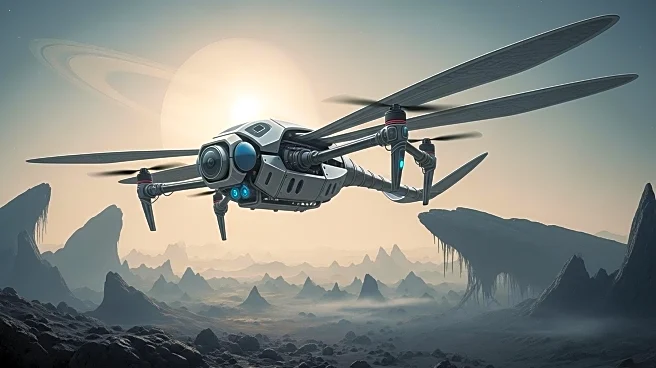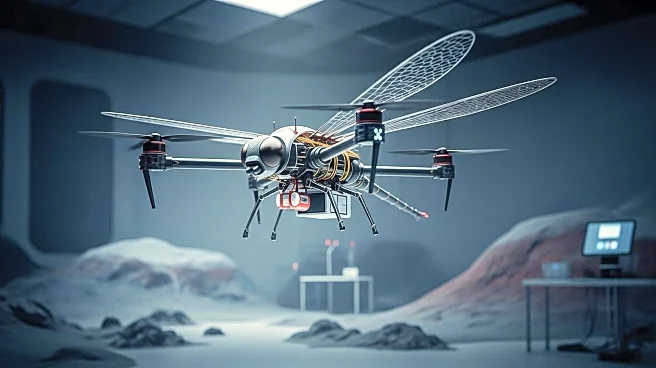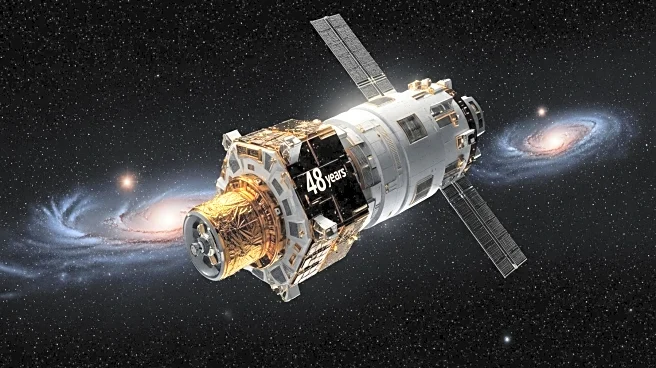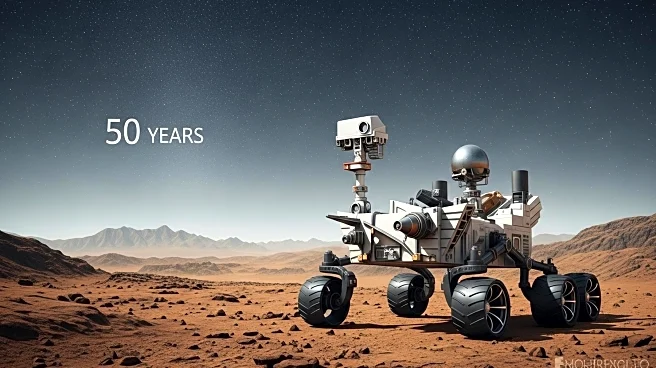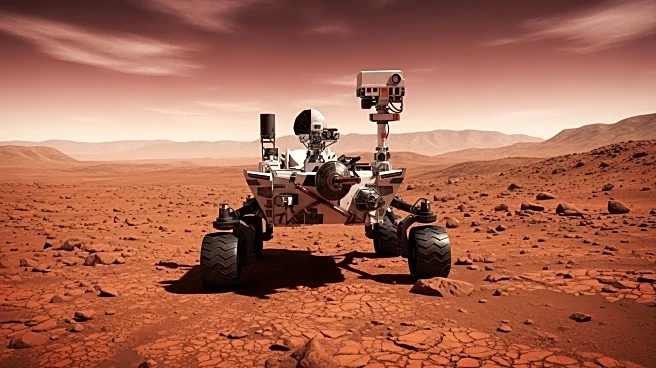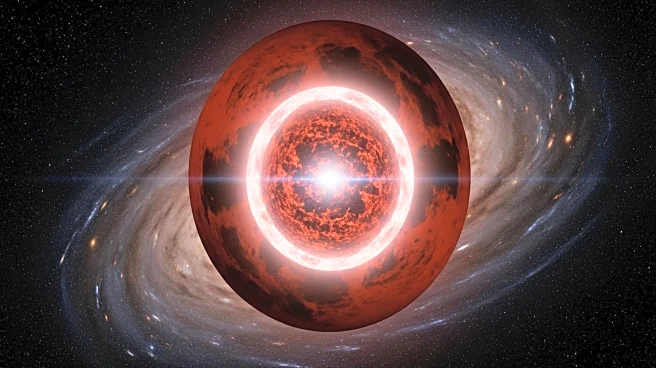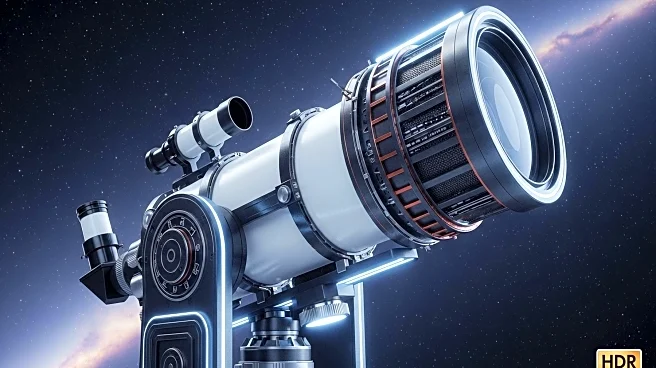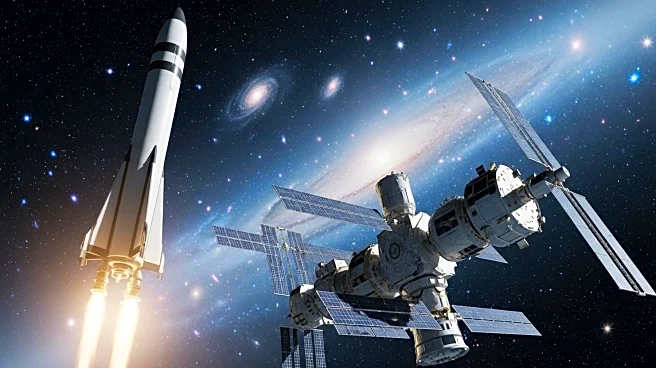What's Happening?
NASA's Dragonfly mission, a nuclear-powered rotorcraft designed to explore Saturn's moon Titan, has achieved several critical development milestones. The mission, led by the Johns Hopkins Applied Physics Laboratory, is set for launch in July 2028. Dragonfly will investigate Titan's surface over three years, aiming to understand its habitability and the building blocks of life. Recent progress includes aerodynamic tests of the rotorcraft's rotors, durability trials of its foam insulation, and the assembly of its science payload. The mission's flight systems and communication radios have also been evaluated, ensuring readiness for the journey to Titan.
Why It's Important?
Dragonfly's mission to Titan is significant for planetary science, as it aims to explore one of the most Earth-like bodies in the solar system. Titan's thick atmosphere and surface conditions offer a unique environment for studying prebiotic chemistry and potential habitability. The mission's success could provide insights into the origins of life and the conditions necessary for life to exist beyond Earth. Additionally, Dragonfly's development showcases advancements in aerospace engineering, particularly in rotorcraft design and nuclear-powered exploration, which could influence future missions to other celestial bodies.
What's Next?
Dragonfly is scheduled to begin its integration and test phase in January 2026, with a launch planned for July 2028. The mission will utilize a SpaceX Falcon Heavy launch vehicle from NASA's Kennedy Space Center. As development continues, engineers will focus on ensuring the rotorcraft's systems can withstand Titan's extreme conditions, including its frigid temperatures and dense atmosphere. The mission's success will depend on thorough testing and validation of its components, as well as effective collaboration between NASA and its partners.
Beyond the Headlines
Dragonfly's exploration of Titan could have broader implications for understanding the potential for life in the universe. The mission may challenge existing theories about life's origins and the conditions necessary for its development. Additionally, Dragonfly's innovative design and use of nuclear power could pave the way for more ambitious missions to distant worlds, expanding humanity's reach in the solar system.
